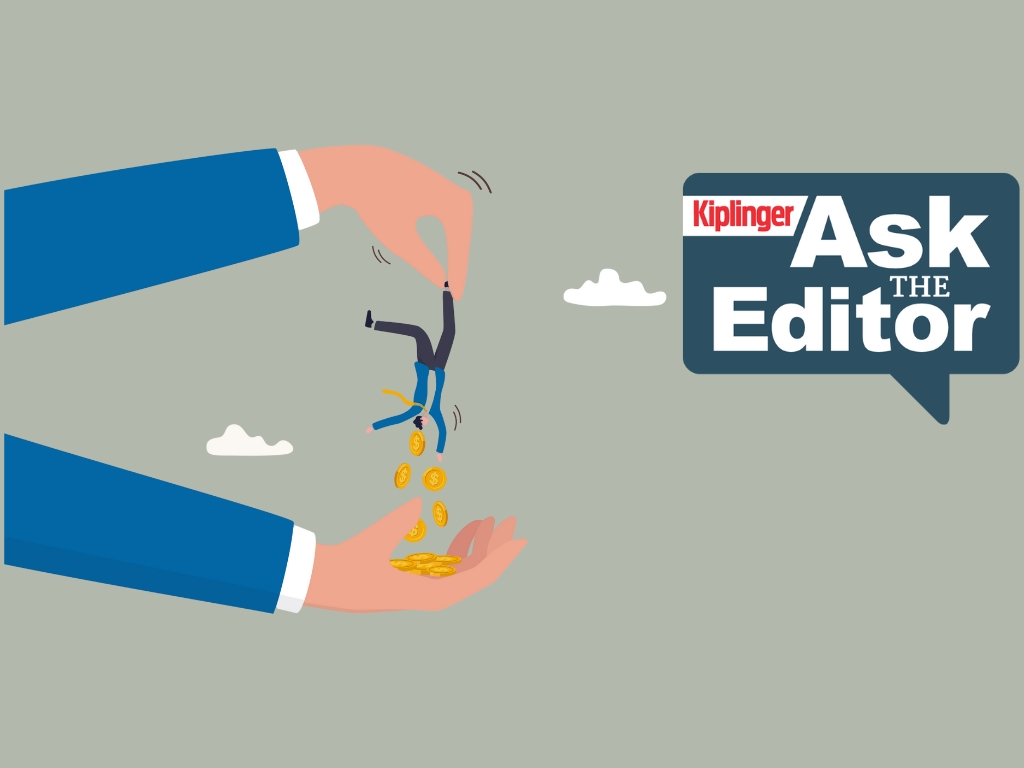Traffic Circles Can Make Intersections Safer, But Also Confusing: The Kiplinger Letter
In the U.S. traffic circles are on the rise — studies show that roundabouts, as they are commonly known, are safer than traditional intersections.

Traffic circles may improve the flow of traffic, but they can confuse drivers and create challenges for cyclists. To help you understand what’s next for road design in the future, our highly experienced Kiplinger Letter team will keep you abreast of the latest developments and forecasts (Get a free issue of The Kiplinger Letter or subscribe). You'll get all the latest news first by subscribing, but we will publish many (but not all) of the forecasts a few days afterward online. Here’s the latest…
The U.S. continues to warm up to traffic circles, a road design long embraced globally. Until the 1990s, circular intersections were rare, but in the past 25 years, an estimated 10,000 have been built in cities and towns across the U.S., with plenty more planned. This lags behind countries like the U.K., which has almost three times as many, despite being 40 times smaller in land mass.
New York City’s Columbus Circle is one of the first traffic circles. Designed in the 19th century by William Phelps Eno during the making of Central Park, the circle now serves traffic on Central Park South, Broadway, and Eighth Avenue-Central Park West.
From just $107.88 $24.99 for Kiplinger Personal Finance
Become a smarter, better informed investor. Subscribe from just $107.88 $24.99, plus get up to 4 Special Issues

Sign up for Kiplinger’s Free Newsletters
Profit and prosper with the best of expert advice on investing, taxes, retirement, personal finance and more - straight to your e-mail.
Profit and prosper with the best of expert advice - straight to your e-mail.
Proponents say traffic circles, which are often called roundabouts, are much safer than traditional intersections and improve traffic flow because drivers don’t have to stop and wait for red lights. When compared to traditional intersections, traffic circles reduce collisions by 37% and fatal collisions by 90%, according to studies by the Insurance Institute for Highway Safety (IIHS) and the Federal Highway Administration (FHWA). Critics say they may not handle heavy traffic well and, depending on the design, can be dangerous for bicyclists. Another worry: Driver confusion.
Florida has the most traffic circles in the U.S., with about 600 through 2022. Washington, Indiana, Wisconsin and North Carolina round out the top five. The top city? Carmel, Indiana.
This forecast first appeared in The Kiplinger Letter, which has been running since 1923 and is a collection of concise weekly forecasts on business and economic trends, as well as what to expect from Washington, to help you understand what’s coming up to make the most of your investments and your money. Subscribe to The Kiplinger Letter.
Related Content
Profit and prosper with the best of Kiplinger's advice on investing, taxes, retirement, personal finance and much more. Delivered daily. Enter your email in the box and click Sign Me Up.

Sean Lengell covers Congress and government policy for The Kiplinger Letter. Before joining Kiplinger in January 2017 he served as a congressional reporter for eight years with the Washington Examiner and the Washington Times. He previously covered local news for the Tampa (Fla.) Tribune. A native of northern Illinois who spent much of his youth in St. Petersburg, Fla., he holds a bachelor's degree in English from Marquette University.
-
 Top Tech Gifts to Grab at Walmart Before Christmas
Top Tech Gifts to Grab at Walmart Before ChristmasBig savings on Apple, Bose, HP, Vizio and more while there's still time to shop.
-
 AI Appliances Aren’t Exciting Buyers…Yet
AI Appliances Aren’t Exciting Buyers…YetThe Kiplinger Letter Artificial intelligence is being embedded into all sorts of appliances. Now sellers need to get customers to care about AI-powered laundry.
-
 Ask the Editor: IRAs, 401(k)s and RMDs
Ask the Editor: IRAs, 401(k)s and RMDsAsk the Editor In this week's Ask the Editor Q&A, Joy Taylor answers questions on IRAs, 401(k)s and required minimum distributions
-
 AI Appliances Aren’t Exciting Buyers…Yet
AI Appliances Aren’t Exciting Buyers…YetThe Kiplinger Letter Artificial intelligence is being embedded into all sorts of appliances. Now sellers need to get customers to care about AI-powered laundry.
-
 What to Expect from the Global Economy in 2026
What to Expect from the Global Economy in 2026The Kiplinger Letter Economic growth across the globe will be highly uneven, with some major economies accelerating while others hit the brakes.
-
 The AI Boom Will Lift IT Spending Next Year
The AI Boom Will Lift IT Spending Next YearThe Kiplinger Letter 2026 will be one of strongest years for the IT industry since the PC boom and early days of the Web in the mid-1990s.
-
 Amid Mounting Uncertainty: Five Forecasts About AI
Amid Mounting Uncertainty: Five Forecasts About AIThe Kiplinger Letter With the risk of overspending on AI data centers hotly debated, here are some forecasts about AI that we can make with some confidence.
-
 Worried About an AI Bubble? Here’s What You Need to Know
Worried About an AI Bubble? Here’s What You Need to KnowThe Kiplinger Letter Though AI is a transformative technology, it’s worth paying attention to the rising economic and financial risks. Here’s some guidance to navigate AI’s future.
-
 Will AI Videos Disrupt Social Media?
Will AI Videos Disrupt Social Media?The Kiplinger Letter With the introduction of OpenAI’s new AI social media app, Sora, the internet is about to be flooded with startling AI-generated videos.
-
 What Services Are Open During the Government Shutdown?
What Services Are Open During the Government Shutdown?The Kiplinger Letter As the shutdown drags on, many basic federal services will increasingly be affected.
-
 The Economy on a Knife's Edge
The Economy on a Knife's EdgeThe Letter GDP is growing, but employers have all but stopped hiring as they watch how the trade war plays out.